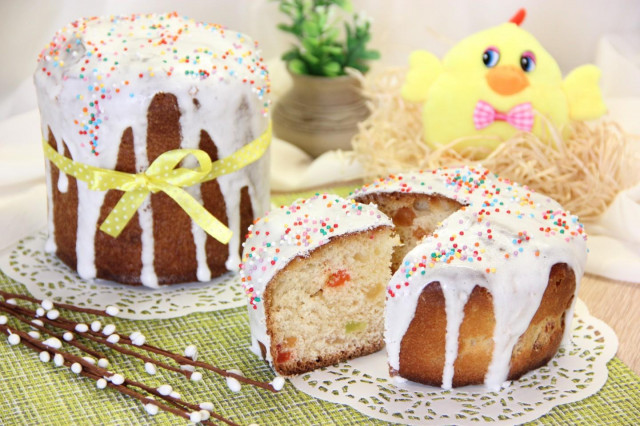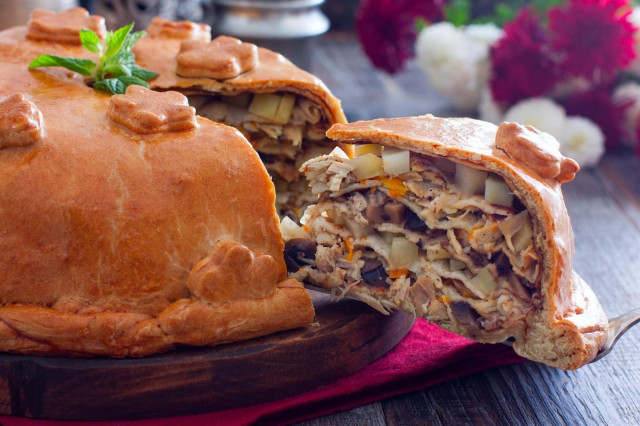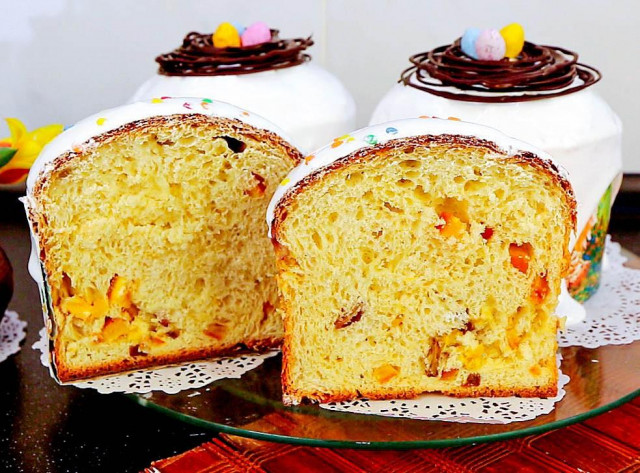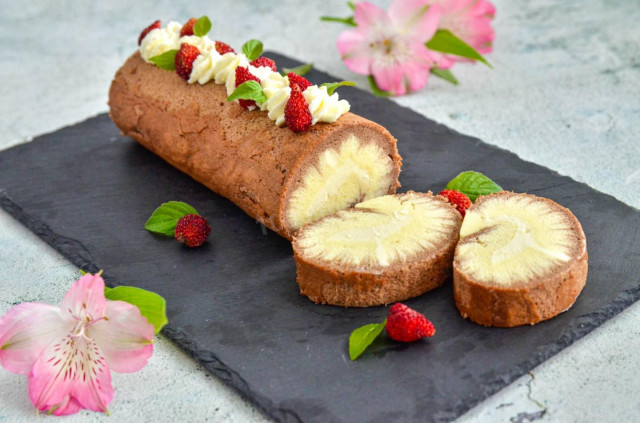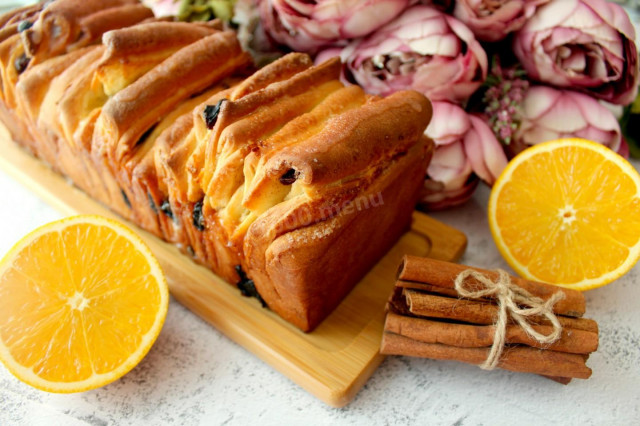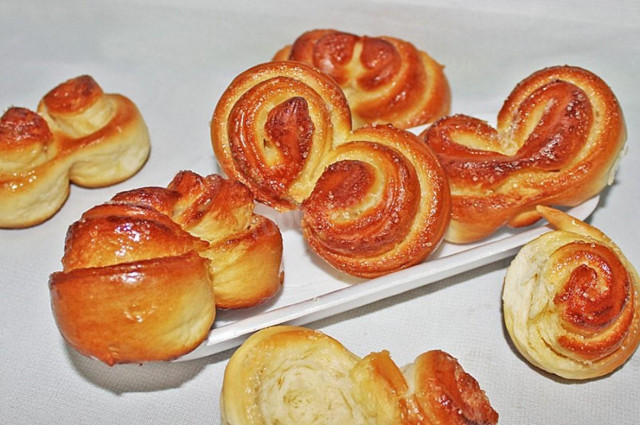Composition / ingredients
Step-by-step cooking
Step 1:
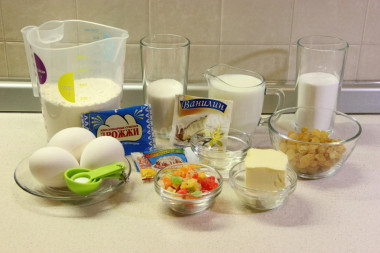
Prepare the products.
Step 2:
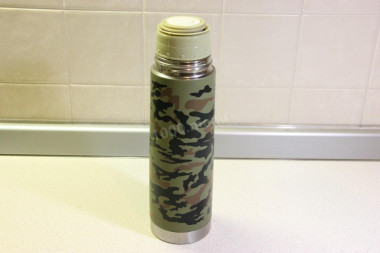
You can take ready-made stewed milk, or you can cook it yourself : Take a glass of 250ml milk, bring to a boil, lower the temperature and leave to boil for 10 minutes. Pour into a thermos and leave to steam for 30 minutes. /Stewed milk has a richer taste and aroma/. - Measure the amount of milk according to the recipe: 130ml, let it cool down, it should be warm.
Step 3:
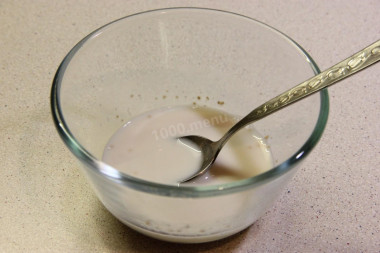
1.5 tsp or 3g / as convenient for anyone / mix dry yeast with 1h.l. sugar, pour in 40ml of warm milk or a third part, stir and leave for 10-15 minutes so that the yeast comes to life.
Step 4:
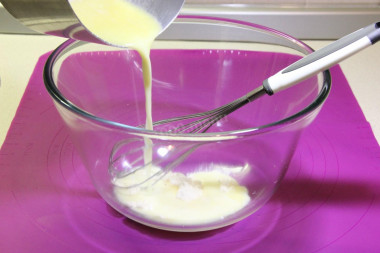
In a ladle, combine the remaining milk and half / 30g / butter, bring to a boil. In a bowl for kneading the dough, pour 1 tablespoon of flour / sift all the flour in advance / and pour boiling milk with butter, stir quickly and well with a whisk until smooth, let the mass cool to room temperature.
Step 5:
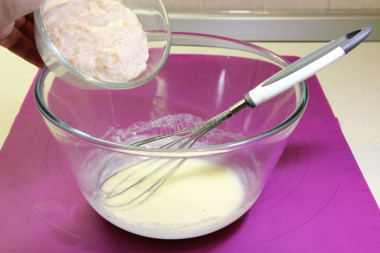
Now combine with the revived yeast mixture, mix well, cover with a film and leave to ferment for 30-40 minutes in a warm place. / As always in my oven, the temperature is no higher than 35 degrees! /
Step 6:
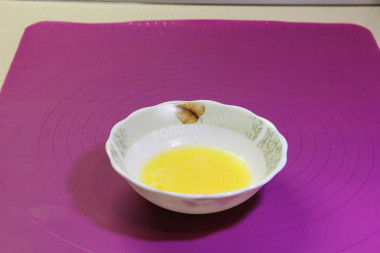
In the meantime, prepare the other ingredients : - Melt the butter and leave to cool. - Separate the yolks from the whites./The dough will use 2 yolks and 1 protein /. - Add a pinch of salt and 1/2 sugar, vanilla to 2 yolks. Rub well with a whisk until the mass becomes light and creamy. / If the eggs are rustic, with a bright yellow yolk, then the dough will turn out to be a pleasant yellow color. This time I had the usual city/.
Step 7:
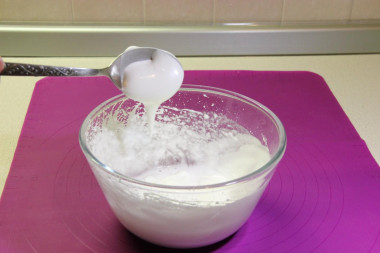
1 beat the protein with a mixer, gradually adding sugar, beat until stable peaks.
Step 8:
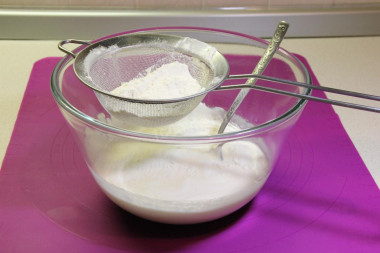
When the sourdough is suitable, add the yolk mass to it, mix well. Mix the whipped whites. Gradually add the sifted flour and knead the dough. /Protein changes its structure and integrates better into the dough. Here he strengthens the dough, it's not like in a biscuit, so knead - don't be afraid /.
Step 9:
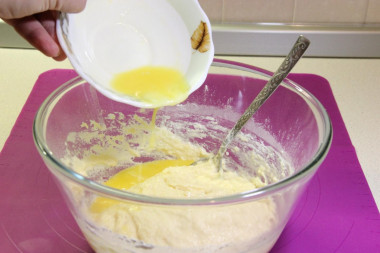
At the end, when the flour has absorbed all the liquid, pour in the cooled butter. Knead the dough well with your hand, 15-20 minutes. /If the dough seems steep - add milk, if liquid - add flour /.To facilitate kneading, dip your fingers in vegetable oil and so use 1st.l.
Step 10:
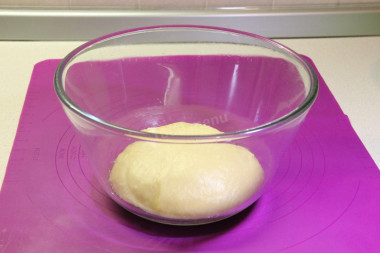
The finished dough will be soft, tender and will not stick to your hands and bowl. Grease a clean bowl with vegetable oil, round the dough and place it in a bowl. Cover with a film and leave in a warm place for fermentation for 1 hour.
Step 11:
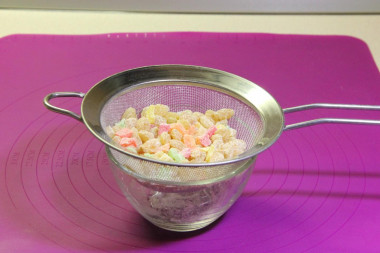
Pour boiling water over the raisins for 10 minutes, rinse, remove the tails and dry with a towel. Add candied fruits, flour, mix and sift to remove excess.
Step 12:
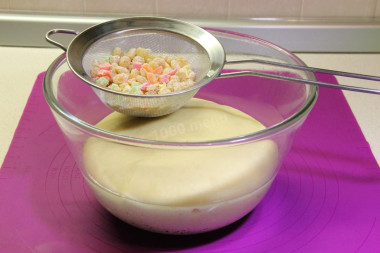
When the dough is suitable, it is easy to knead it and mix the raisins with candied fruits. Knead well, 5 minutes, on the table.
Step 13:
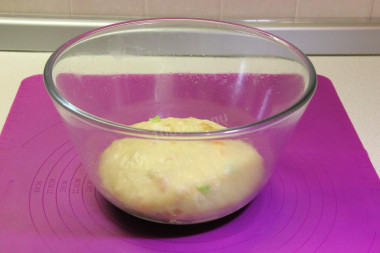
Round it up, return it to the bowl, cover with a film or napkin and let it rise again in the heat.
Step 14:
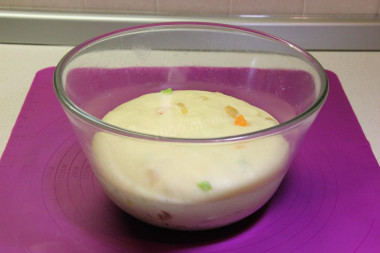
In 40 minutes it will double like this.
Step 15:
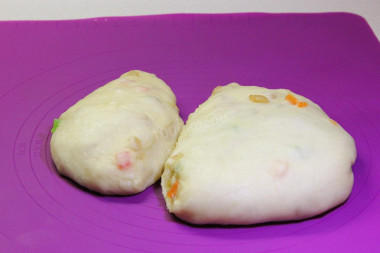
Without crumpling, divide the dough into 2 parts. In a smaller form about 200g, the rest in a large one.
Step 16:
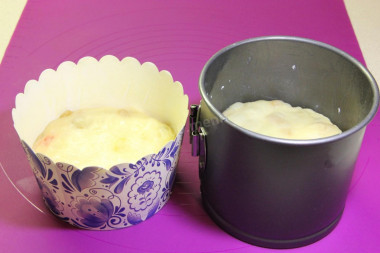
Grease the molds with butter, lightly sprinkle with flour. Very carefully, without crumpling, round the dough and place it in the mold. Press lightly so that the dough is evenly distributed over the bottom. The dough should take 1/3 of the mold, maybe a little more. Cover the molds with a film and leave to warm for 1 hour.
Step 17:
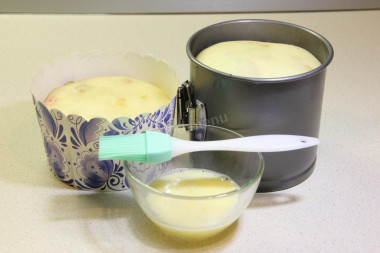
I used two shapes, size d 12, h 11cm, and d 10, h 8cm. That's how the dough rose. Before baking, mix the egg with 1 h.l. milk and grease the top of the cakes. Immediately put the cakes in a preheated oven to 100 degrees, after 10 minutes increase the temperature to 180 degrees and bake until ready. Check with a thin skewer, it should come out dry. I had a small cake ready in 30 minutes, a large one in 40. Cool the cakes on the side.
Step 18:
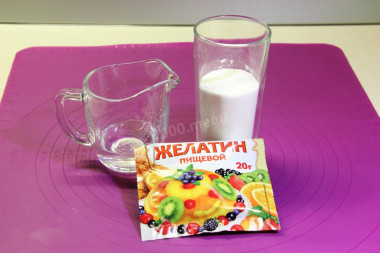
Prepare the glaze on gelatin : - Dilute gelatin with water, stir and leave to swell. - Add water to the powdered sugar and stir until smooth, put put on the stove and bring to a boil. - Remove from the stove and pour into the gelatin, stir until it completely dissolves. - Immediately beat the mixture with a mixer / about 5 minutes /. The mass will become white, airy and increase in volume.
Step 19:
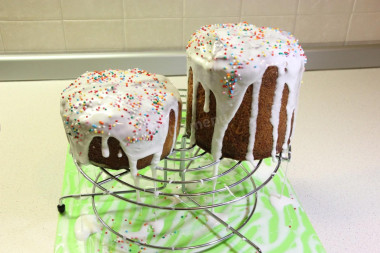
The glaze sets very quickly! Therefore, immediately cover the cakes and decorate the top according to your desire. Glaze only completely cooled cakes.
Step 20:
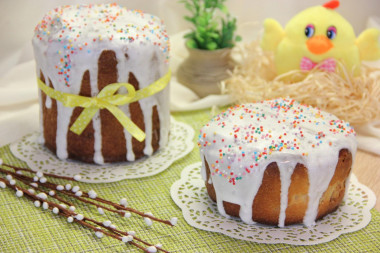
Happy Easter to you!
After baking, the cake is airy, the structure will thicken a little after a day, it does not crumble.
According to custom, the dough was put from Thursday to Friday, they started a lot, because in a larger volume the dough fits better. Baked during Friday, and the next day the whole family carried cakes to church to light them. Easter cakes are eaten throughout the Easter week.
Calorie content of the products possible in the dish
- Whole cow's milk - 68 kcal/100g
- Milk 3.5% fat content - 64 kcal/100g
- Milk 3.2% fat content - 60 kcal/100g
- Milk 1.5% fat content - 47 kcal/100g
- Concentrated milk 7.5% fat content - 140 kcal/100g
- Milk 2.5% fat content - 54 kcal/100g
- Chicken egg - 157 kcal/100g
- Egg white - 45 kcal/100g
- Egg powder - 542 kcal/100g
- Egg yolk - 352 kcal/100g
- Ostrich egg - 118 kcal/100g
- Pressed yeast - 109 kcal/100g
- Whole durum wheat flour fortified - 333 kcal/100g
- Whole durum wheat flour, universal - 364 kcal/100g
- Flour krupchatka - 348 kcal/100g
- Flour - 325 kcal/100g
- Granulated sugar - 398 kcal/100g
- Sugar - 398 kcal/100g
- Butter 82% - 734 kcal/100g
- Amateur unsalted butter - 709 kcal/100g
- Unsalted peasant butter - 661 kcal/100g
- Peasant salted butter - 652 kcal/100g
- Melted butter - 869 kcal/100g
- Raisins - 280 kcal/100g
- Kishmish - 279 kcal/100g
- Vegetable oil - 873 kcal/100g
- Gelatin - 355 kcal/100g
- Salt - 0 kcal/100g
- Water - 0 kcal/100g
- Vanillin - 288 kcal/100g
- Powdered sugar - 374 kcal/100g
- Candied fruit mixture - 216 kcal/100g

